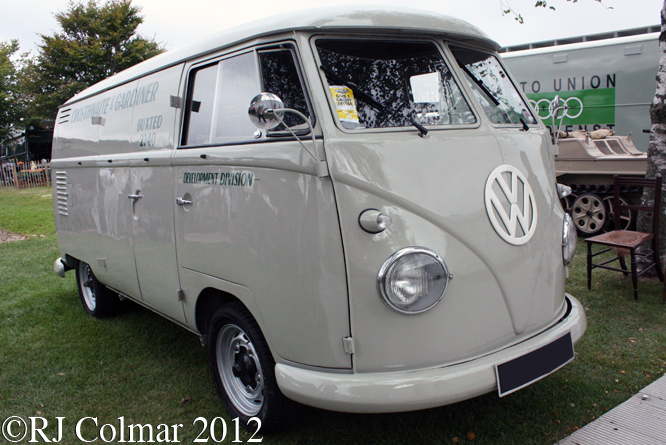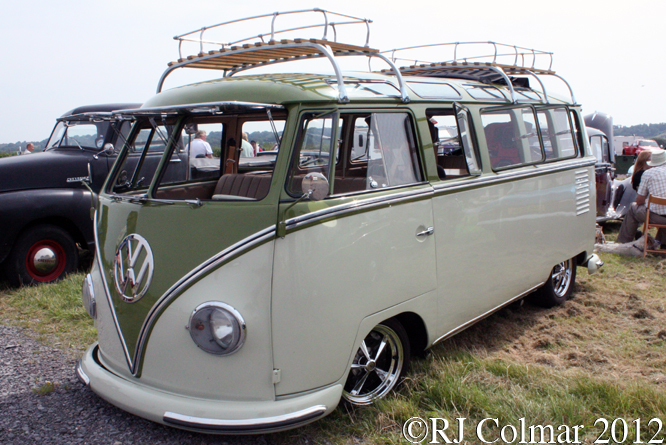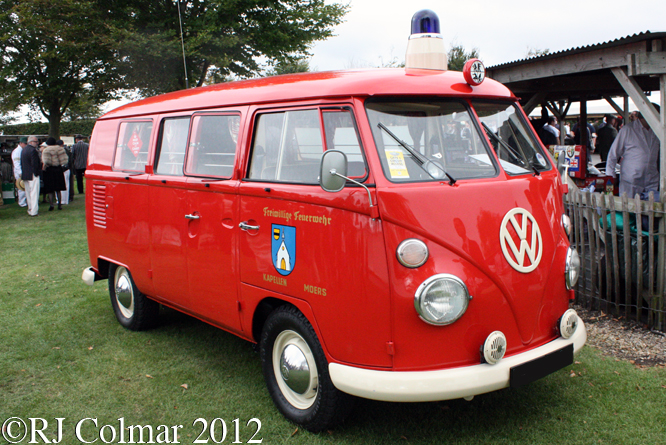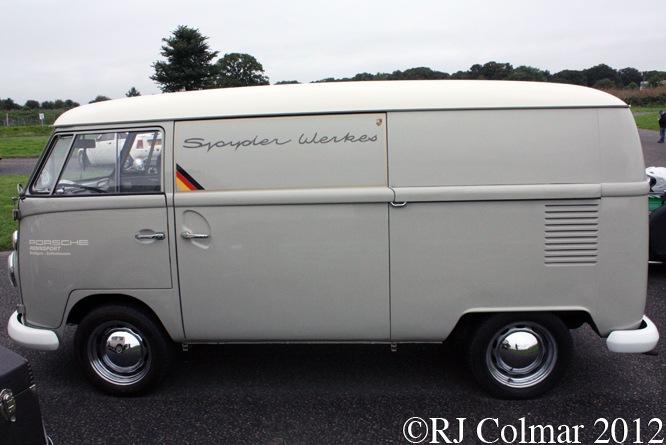In 1946 production of the VW Beetle was in full swing at maximum capacity at the Wolfsburg plant when Dutch importer Ben Pon paid the factory a visit and observed an improvised parts transporter which he recognised could be vastly improved upon with a new vehicle using a stock Beetle Type 1 chassis pan. Pons first doodles of his proposed vehicle were dated 1947 and two and a half years later the first type 2 rolled off the production line.
The split windscreen was not part of Ben’s original design but was incorporated to improve the aerodynamic efficiency after wind tunnel testing showed marked improvements of the split screen at the University of Braunschweig. The original Type 2 with just 25 hp were rated to carry 1,500 lbs / 690 kgs. Above is a 1959 Type 2 with hinged rear door used by leading historic race car restoration specialists Crosthwaite & Gardiner who pride themselves on manufacturing everything from a Bugatti nut to an entire Auto Union Grand Prix car.
It was not long before the versatility of the Type 2 began to shine through with, panel vans, 2 and four seat pickups, buses, campers being offered while 3rd parties converted Type 2’s to run on railway tracks and a myriad of other applications. It was not long before Type 2s were manufactured in a new dedicated plant in Hannover.
The Type 2’s underwent continuous development by 1967 a larger motor was producing 54 hp and the load capacity had increased to 1000 kgs / 2,205 lbs. production of the Type 2 (T1) ceased in Germany in 1967 but continued in Brazil until 1975. Above is a 1964 Type 2 Transporter that appears to have served the Kapellen Stadt Moers volunteer fire brigade in North Rhine Westfalen. Like all today’s featured Type 2s it’s a left hooker which goes to show just how popular these vehicles still are in the UK.
The period from 1947 to 1991 is often referred to as the era of the Cold War between the Western Allies and East Bloc, a period punctuated by tensions in which mutually assured nuclear destruction reared it’s head as a possibility from time to time. What I did not realise was that the Western Allies were not in a particularly harmonious economic relationship at the time.
Each member nation was keen to preserve it’s own industries from the predatory monopolism of it’s neighbours and alleged friends. This culminated in 1963, soon after the Cuban missile crises, in the Germans and French placing restrictive tariffs on imported US chicken, in return to protect it’s automotive industry the US placed restrictive tariffs on Type 2s, designating them as commercial vehicles, which cut US sales by two thirds at a stroke. These tariffs are still in place today and Ford who these tariffs were to aimed at protecting among others has resorted to importing vehicles built in Europe which comply with passenger vehicle ordinances and then taking them to a warehouse in Baltimore for the passenger vehicle compliant items to be stripped and shredded turning said vehicles to commercial applications.
Above is a 1966 Type 2 which unusually has sliding rear doors on both sides, this vehicle served the Fire services at Zurich Airport and then a small Swiss village before being returned to it’s original colours and converted for use as a race car tow and support vehicle. With the introduction of the Transporter (T4) in 1990 all previous Transporter/Kombi’s/Buses were retrospectively given T1 to T3 identities so original iteration Type 2’s built between 1950 and 1975 became Type 2 (T1), 2nd iteration Type 2s with larger bodies built from 1968 to present became Type 2 (T2) and third iteration wedge shape Type 2s became Type 2 (T3) also known as T25.
Thanks for joining me on this “Ben’s Bus” edition of “Gettin’ a li’l psycho on tyres” I hope you will join me again tomorrow. Don’t forget to come back now !





